If you’re a passionate horticulturist you will know how many varieties and species of tree there are found all around the world. Keep reading to see my list of trees that start with F.
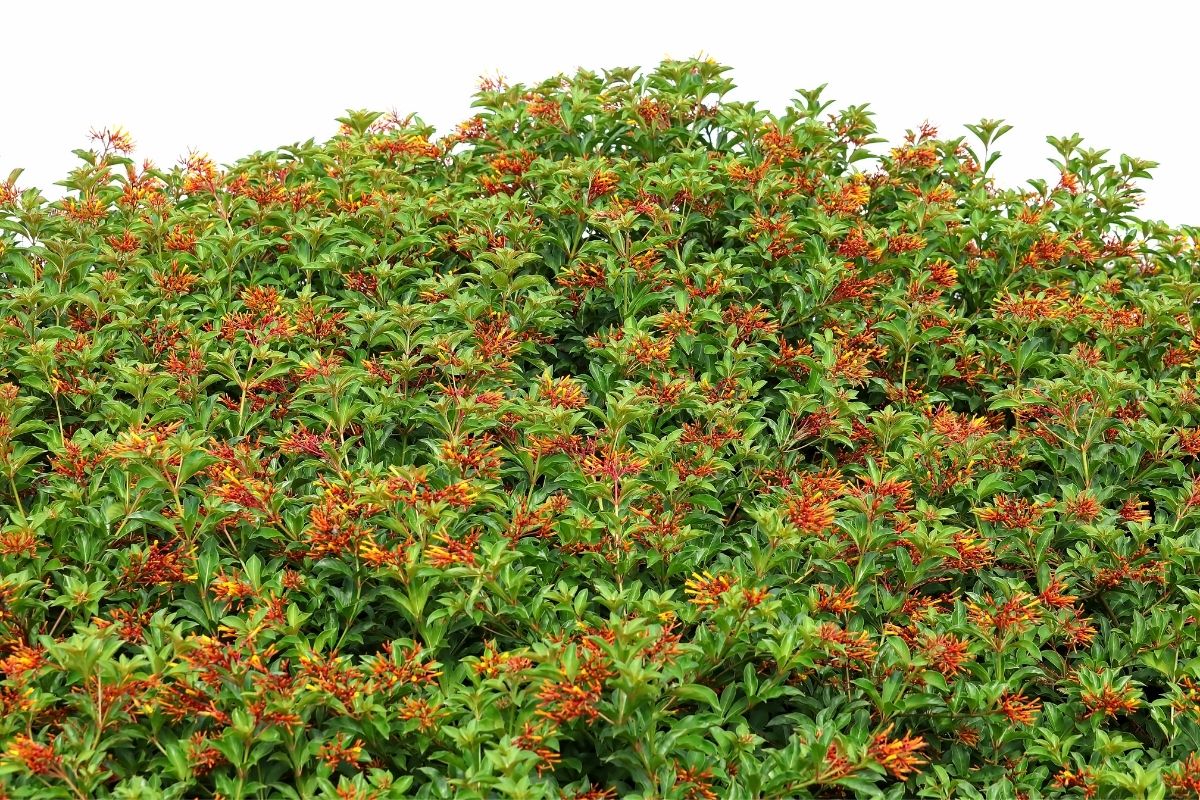
The list is endless with thousands upon thousands of trees differing in shapes, sizes, and color. Uses also vary no matter where you go.
Some trees bear fruit that we eat daily, while we use the wood of other trees to produce a wide range of products.
With so many species and such an array of different uses on offer, it is impossible to learn about every species of tree at once. Luckily for you, that’s where we come in.
In our alphabetical series, we look at different species of trees that start with different letters of the alphabet.
In this article, we take a look at trees that start with the letter F.
By the end, you should have a wider knowledge of the trees that can be found and what they are commonly used for.
Let’s not waste any more time, let’s dive straight into the article.
1. Fig Tree
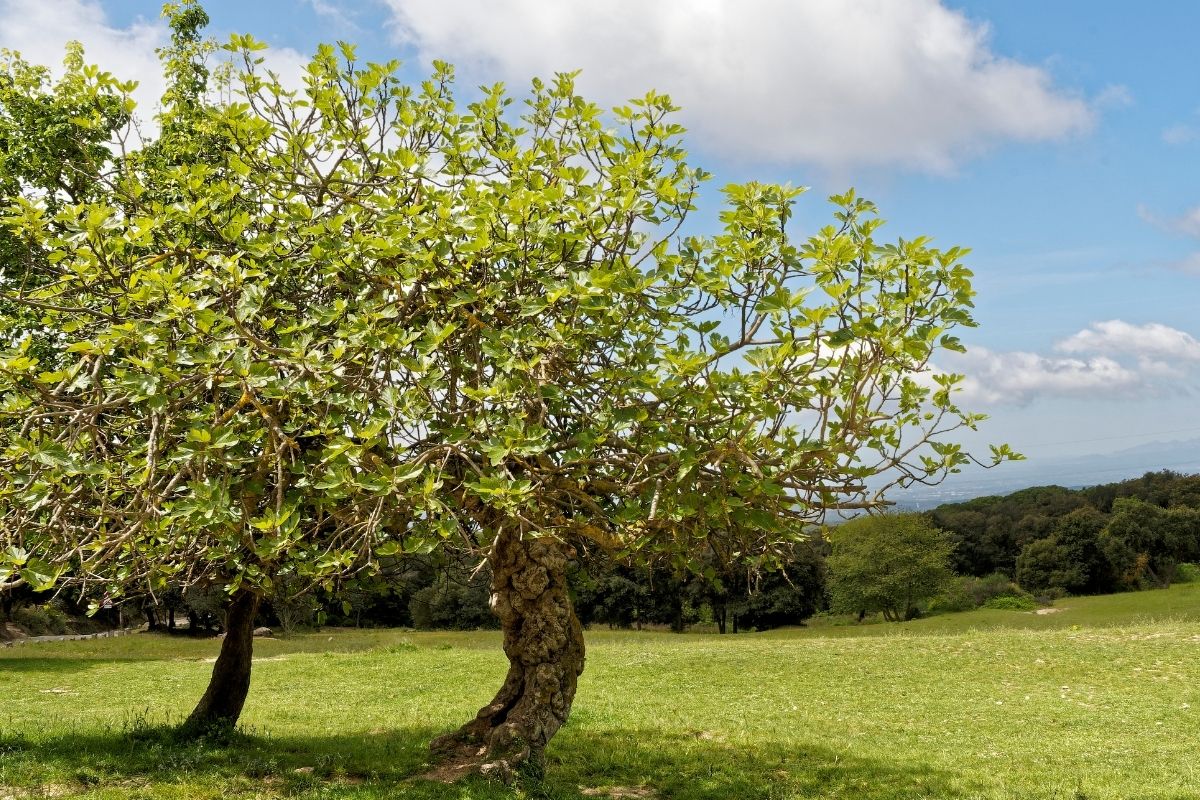
We’ll kick off our list with one of the most obvious trees that start with the letter F.
Also, commonly known as the common fig, the fig tree is a flowering plant that is cultivated for its round, purple fruit.
The sweet fruit with a honey-like fruit is eaten raw or made into some delicious jams.
Native to Mediterranean regions and parts of Asia, the fig tree is only small, growing up to 39 feet (ca. 12 m) in height, making it a great ornamental tree for your garden.
The large, rough deeply lobed deciduous leaves are vibrant green. This along with the deep purple color of the fig tree fruit adds plenty of color to any backyard.
2. Fir Tree
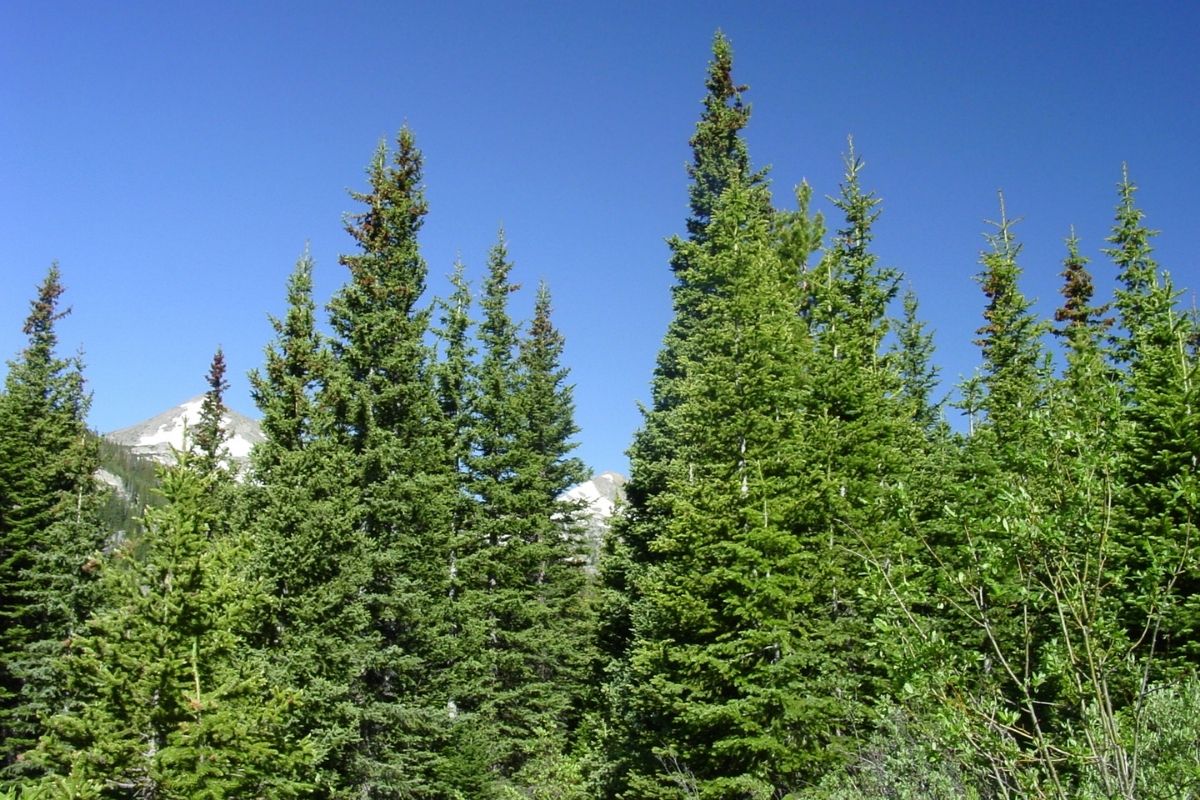
Another well-known tree all around the world is the fir tree. Fir is the name given to over 50 species of tree belonging to the Pinaceae family.
All the trees share the qualities of being evergreen and coniferous.
Shaped like a huge Christmas tree, bearing pine cones, the fir tree can grow from 32 to 262 feet (ca. 80 m) tall and 1.6 to 13 feet (ca. 4 m) in diameter.
Though this tree might be large and stature its wood isn’t suitable for timber. As a result, the pulp is usually extracted from the wood and used to manufacture plywood.
3. Fan Palm
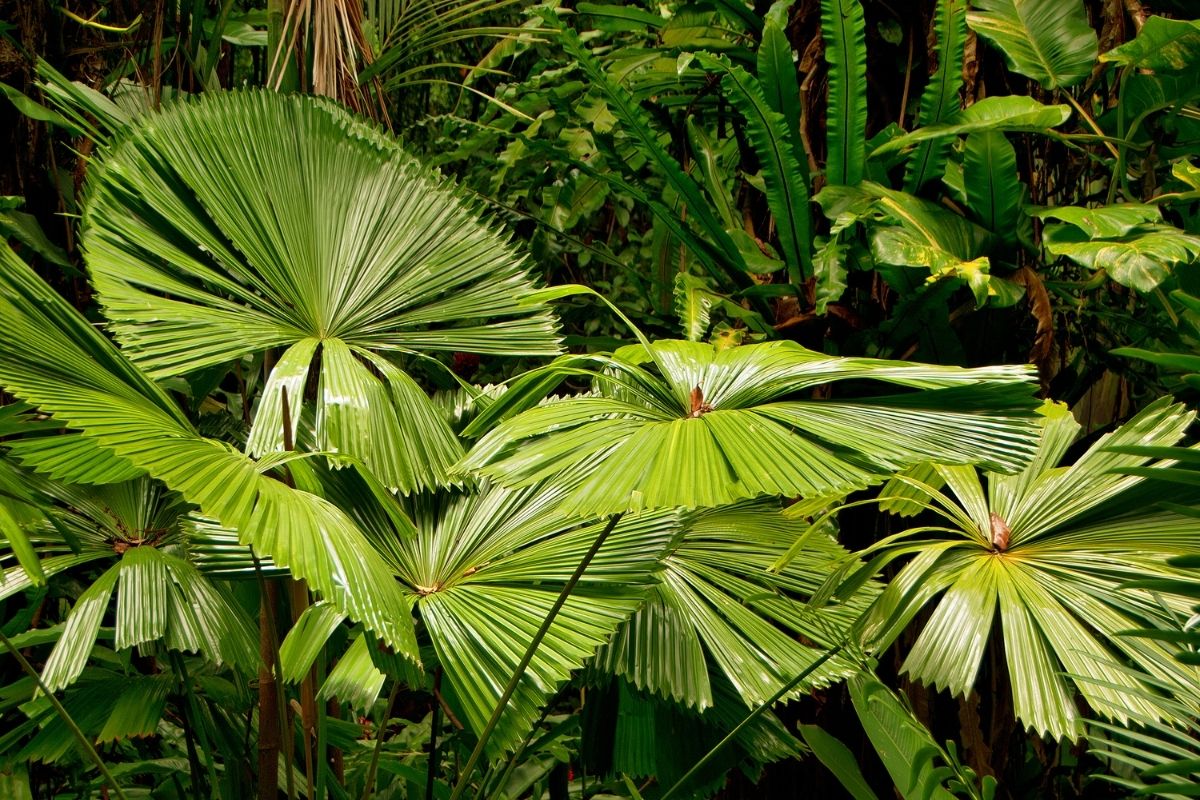
Fan palm trees have a surprisingly slender single trunk just 20 cm in diameter, yet the tree still reaches 65 feet in height.
This species of tree is most famous for its beautiful leaves. Each tree has around 9 to 12 enormous, segmented, pleated, circular leaves that resemble a fan, hence their name.
The name fan palm is actually used to describe a wide range of different palms that all have palmately lobed leaves.
Some of the most common types of fan palm are the European fan palm, Chinese fan palm, and real fan palm. In terms of its uses, the fan palm has had many.
Its leaves have been used to make roofs and baskets, while the fiber has been used to make cord. The center of the fan palm has even been used as an emergency food supply in times of need.
RELATED: Not Down With The Brown: Tips For Saving Your Majesty Palm’s Tips
4. Firebush
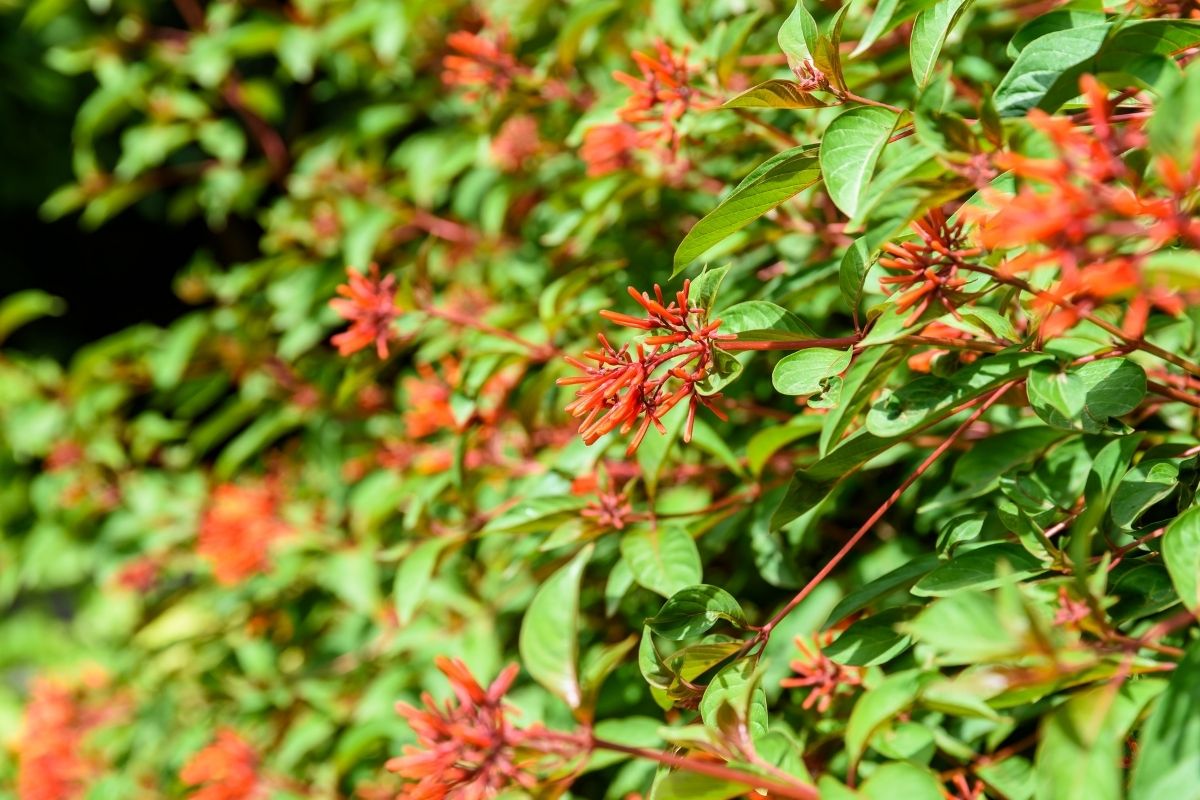
The firebush is loved by gardeners because of the stunning flowers it produces in late spring.
The bright red flowers don’t only look good, they also attract butterflies and hummingbirds. The perennial shrub reaches a height of 12 feet (3.66 m) without needing support.
If given the support, you can expect your firebush to grow to at least 15 feet (4.57 m) tall. Growing up to 56 feet (ca. 17 m) wide, this tree is an excellent choice if you want a more natural fence around your yard.
5. False Cypress Tree
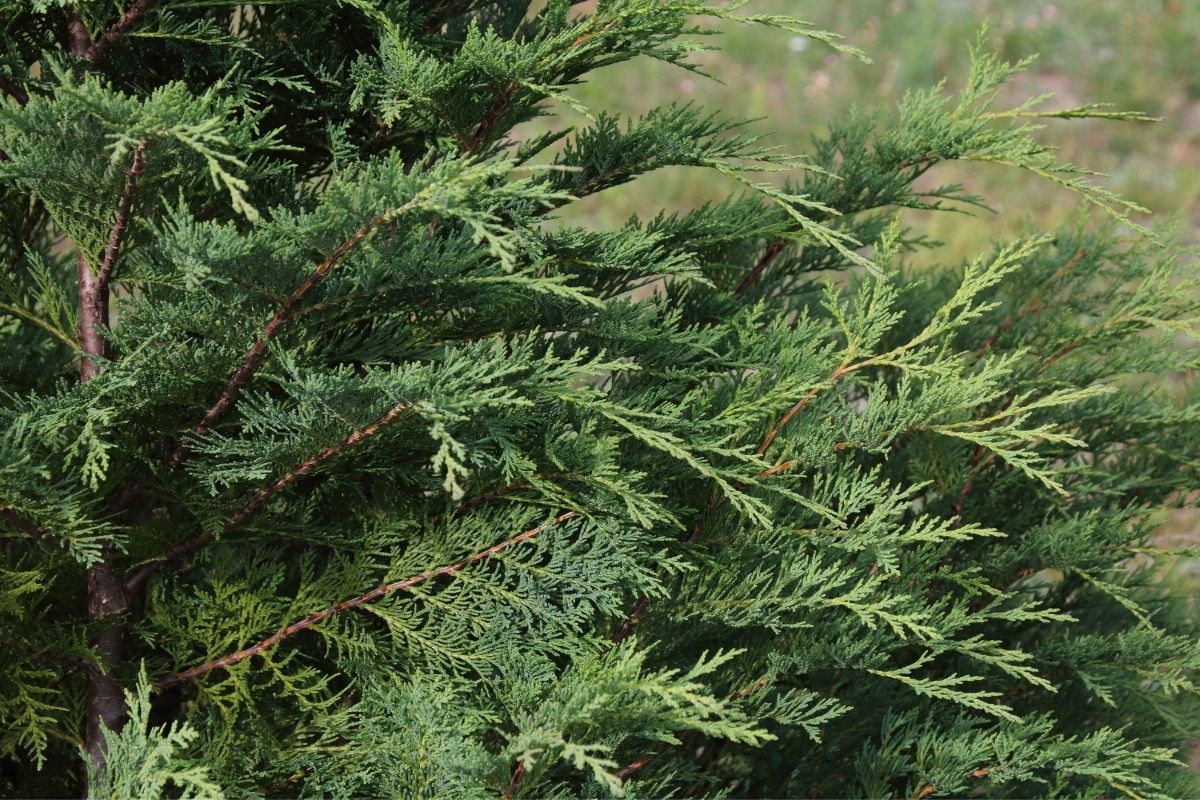
Often referred to by its scientific name Chamaecyparis, the false cypress is an evergreen tree with needle-like leaves when young and scale-like leaves once matured.
Growing to 85 feet (ca. 26 m) tall the false cypress can be planted anytime from spring to early fall.
Thanks to the tree’s textured yellowy, gold foliage with a cedar-like appearance it commonly has ornamental importance.
On the other hand in countries like Japan the false cypress tree wood is considered to be very valuable as it is used in the construction of sacred temples.
Interestingly, before using the false cypress wood, it is scented so that it smells much nicer.
6. Feijoa Tree

Native to the highlands of South American countries this flowering plant is grown for two reasons.
Firstly it is used as an ornamental tree that adds color and vibrancy wherever it is planted.
Secondly, it is used for its fruit.
The feijoa fruit is round and roughly the size of a chicken egg. With a sweet aromatic flavor similar to pineapple or apple the pulp of the fruit is regularly used as a cocktail ingredient.
They can also be eaten raw.
If you don’t recognize the name feijoa it may be because it also has two other names. The feijoa tree is also called pineapple guava and guavasteen, despite not being real guava.
7. Fringe Tree
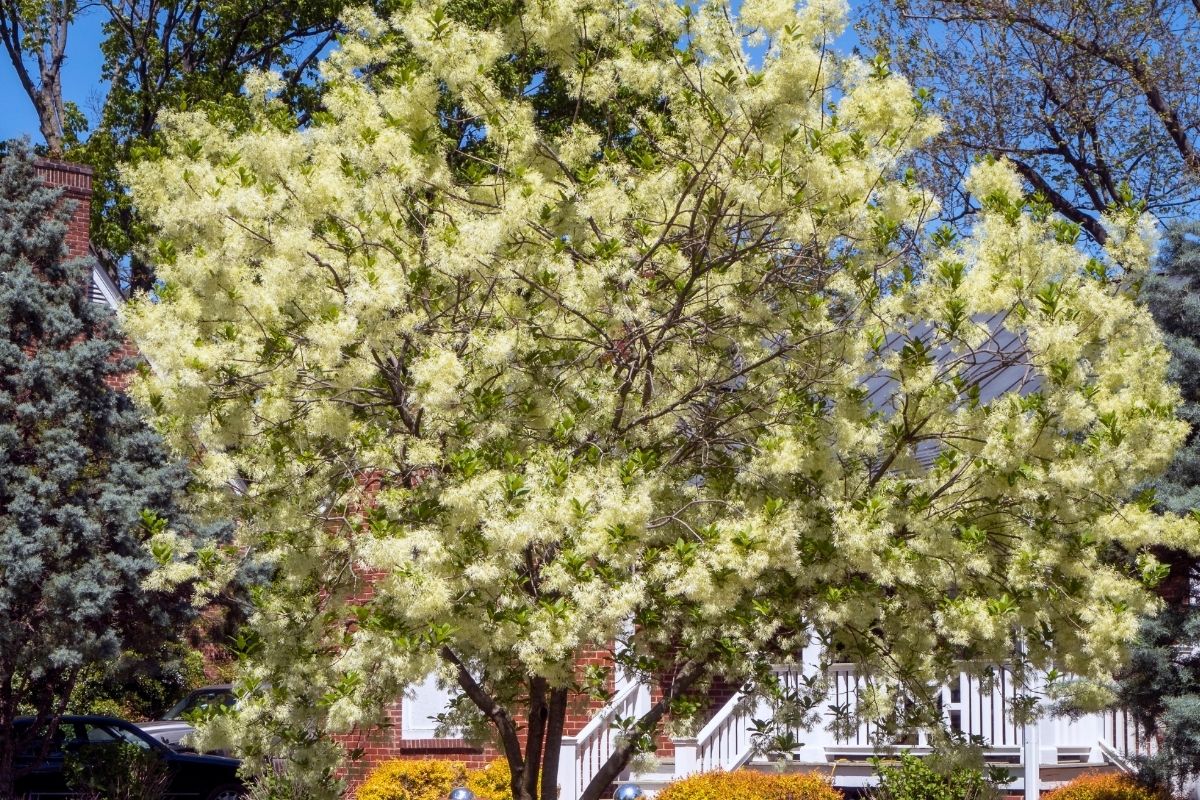
The fringe tree gets its name from the beautifully long, fringy flowers that take over the tree in spring.
The delicate flowers on this tree hang in clusters that are approximately the same size as the basic, yet attractive oval leaves. Each flower has four petals.
The tree itself is medium, with a dark green wax-like appearance. The tree also produces a blue olive fruit that is used to treat liver disorders.
8. Foxtail Palm
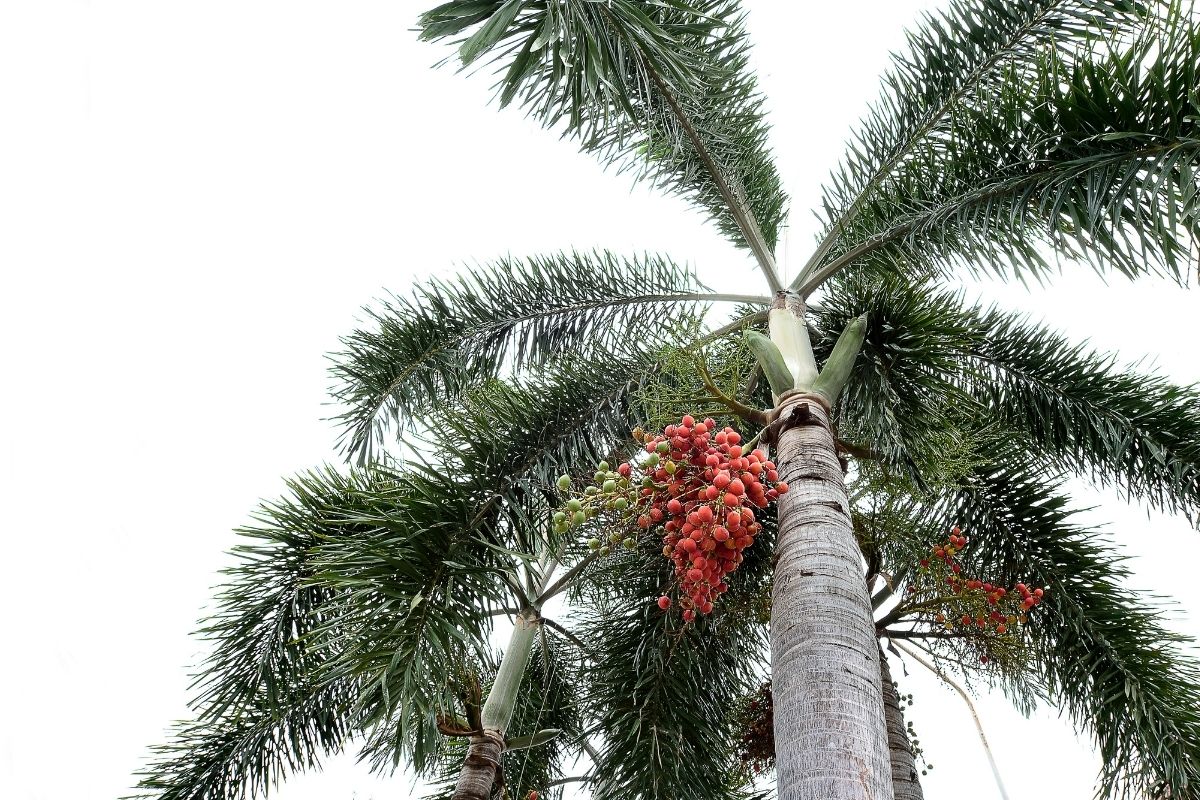
The foxtail palm was only discovered in 1978 when the native people brought it to the attention of botanists.
Native to Queensland, Australia the foxtail palm is described as a flowering plant, with lush green foliage and a tall thick trunk similar to the one found on a king palm.
It also bears fruits that can grow up to 5 cm long. Despite producing a tasty-looking fruit, the foxtail palm tree’s fruit is highly toxic to us and animals.
Growing to over 20 feet in height if you want to grow a foxtail make sure you have plenty of room in your garden.
9. Finger Cherry Tree
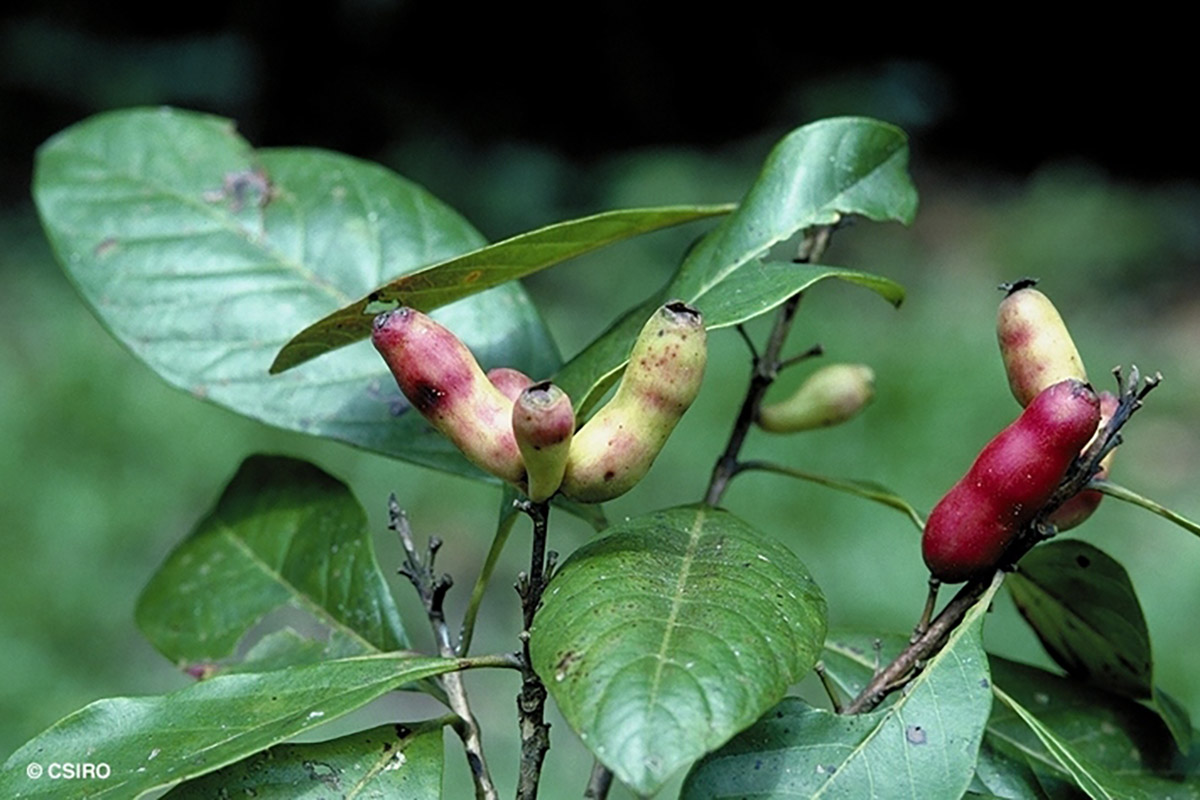
Belonging to the Myrtaceae family, the finger cherry tree is native to Australia where it may also be called wannakai or Cooktown Loquat.
Unlike other trees on this list and similar to the foxtail palm, the fruit on this small tree with its long pointed leaves should be avoided at all costs.
The round yellow fruit on the finger cherry tree is extremely poisonous. In fact, it has even been reported to have caused blindness in children who have accidentally eaten the fruit.
The tree itself looks great and will add something new to your yard, but in our opinion, it isn’t something you should attempt to grow, especially if you have children or pets.
RELATED: Shrouded in Mystery: 37 Different Types Of Mystic Trees
10. False Tamarind

You may know the false tamarind tree by the name wild tamarind. It was given the name false tamarind due to its resemblance with the actual tamarind tree.
This tree is a member of the pea family and native to South Florida where it grows pretty quickly.
Ranging from 30 to 60 feet (ca. 18 m) tall the false tamarind tree has a relatively slender trunk that is also fairly short.
Sat on top of the trunk are long, arching branches that form an umbrella-shaped silhouette. The tree is regularly used as a shade tree for crops.
11. Filbert Hazel

The filbert hazel is a deciduous tree that can grow up to 66 feet tall. Growing best when sat in full sun, this species of tree is best known for its edible nuts and ornamental value.
The multi-stemmed shrub has a wide-spreading base and an open, rounded top.
Though the tree is grown all over North America, almost every filbert hazelnut consumed in America comes from Turkey or Oregon.
For those that haven’t tried the filbert hazelnut before, it has a nutty, earthy taste to it that tastes great when toasted.
12. Fish Poison Tree
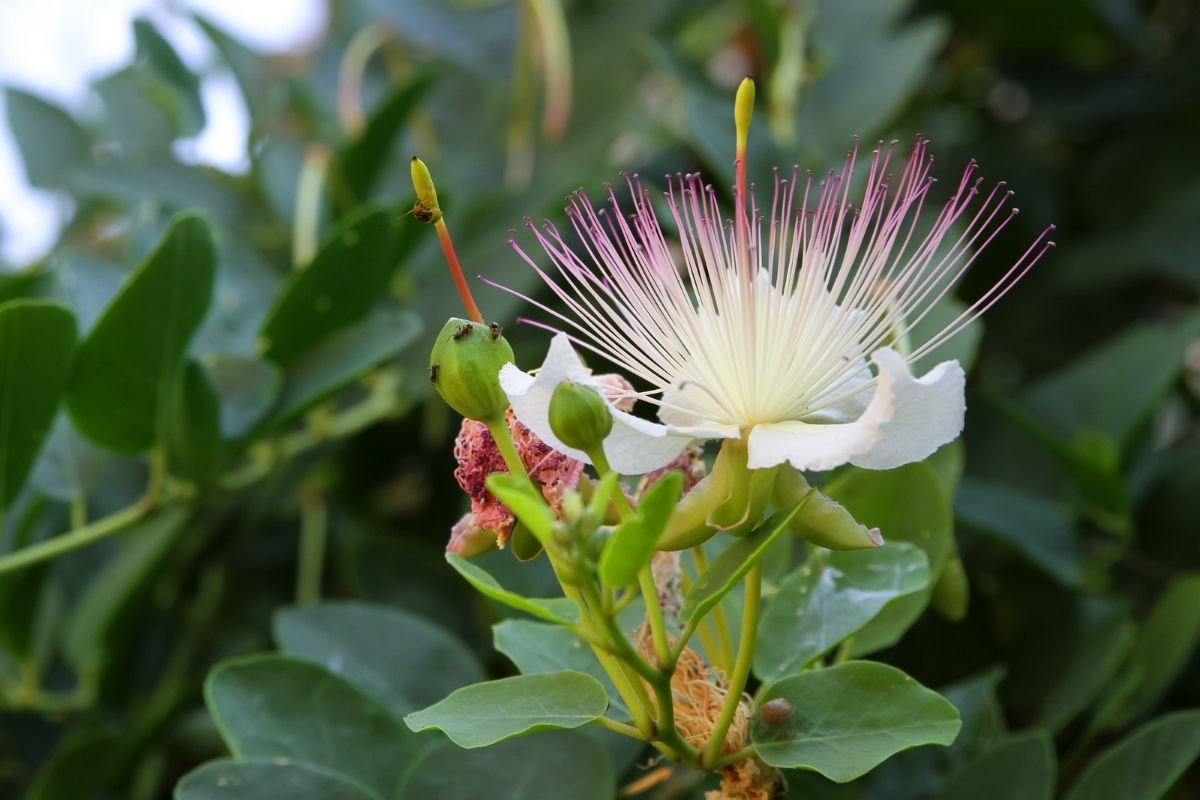
Native to mangrove habitats it will come as no surprise to you that this tree is named after its poisonous parts and its ability to suffocate fish.
Usually found in the Indian and Pacific oceans as well as on some islands, the fish poison tree is soft and light yellow in color. From the tree grows a pink flower and large oddly shaped almond-like fruits.
In regard to what this tree is used for it may have the most uses on this list. The tree isn’t only used in the production of canoes or construction, it is also used as a fuel.
As if that wasn’t enough the fruit that floats on the surface is used to help catch fish thanks to its poisonous properties.
Conclusion
That concludes our list of trees that start with the letter F.
As you can see from our list there is a wide range of trees, with a huge variety of different uses.
Some trees produce fruit that we love to eat, while we use others for their wood which helps us massively in construction. Some trees even offer both.
It is also quite surprising how many trees are planted solely for ornamental purposes. The finger cherry tree and foxtail palm look amazing but aren’t commonly used for anything else as their fruit is toxic.
The beauty of most trees on our list is how they can be grown anywhere if you have the right amount of space.
Now you’ve read our list of why not explore which trees you could grow in your yard.
The trees differ in shapes and sizes so if you have a medium-sized yard you could easily add something new to your garden that might bring color, fruit, or animals with it.
If we were to choose a tree to grow we would go for the firebush as it looks absolutely gorgeous and is fairly easy to grow.
Editor’s Recommendations
9 Pretty Pink Trees (Including Pictures)







